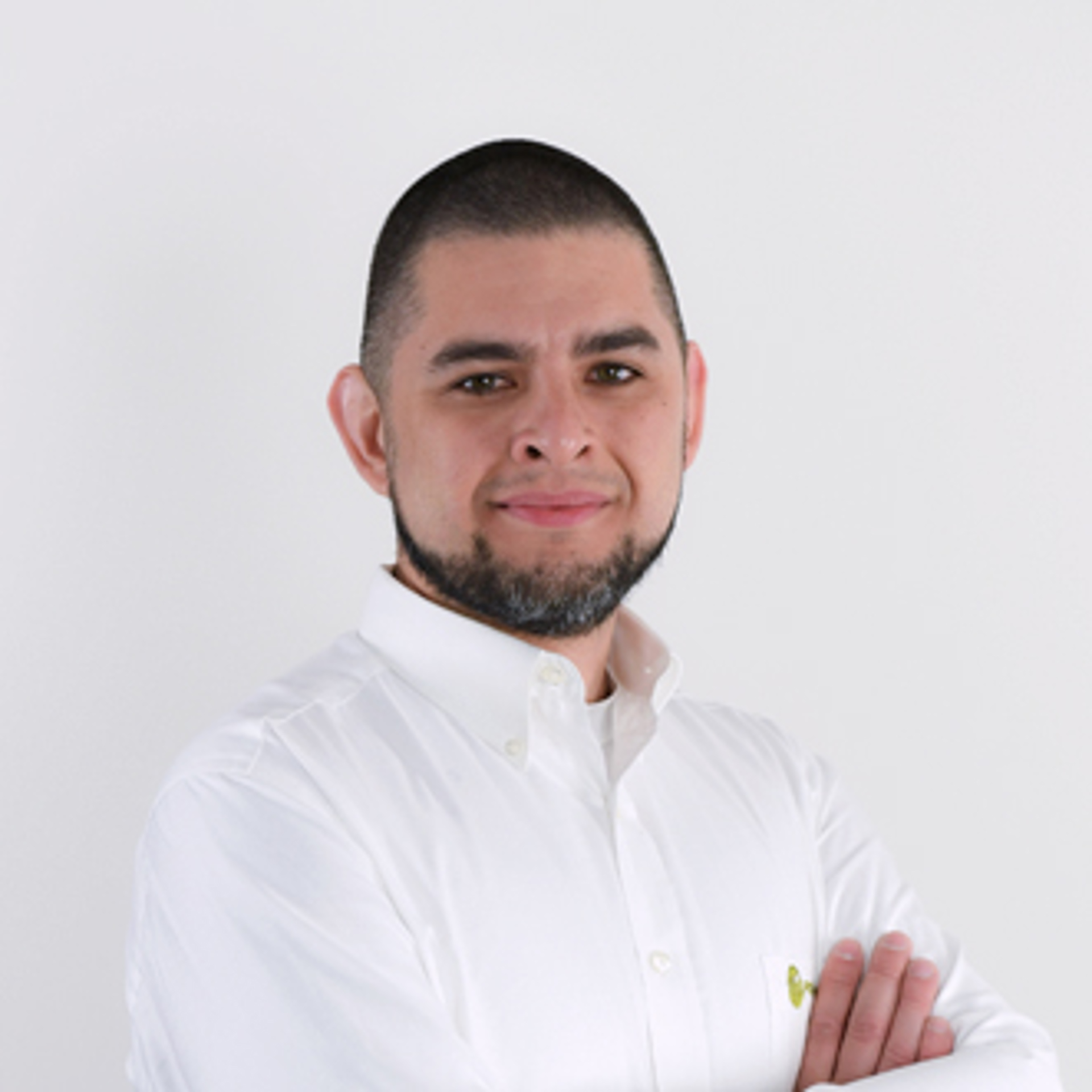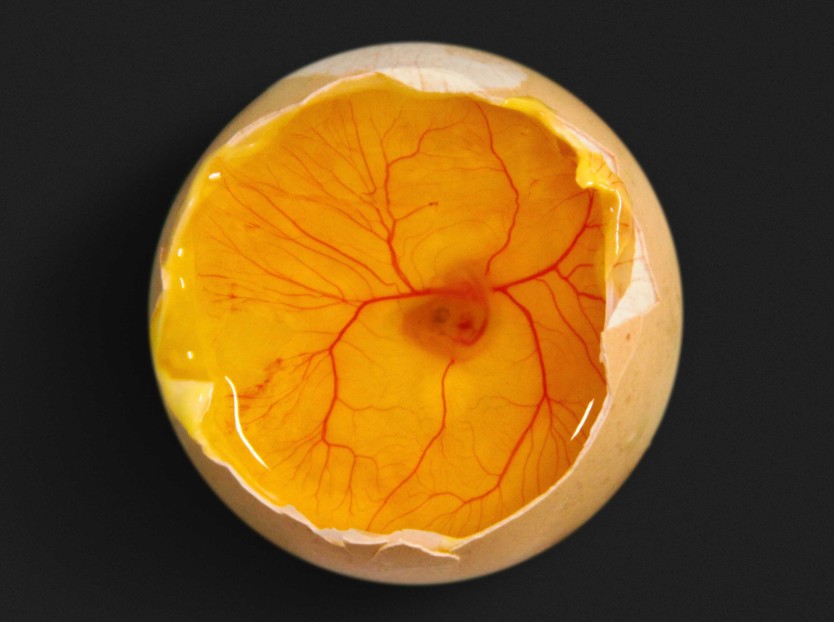Single-stage incubation is a well-established concept in the more modern poultry businesses. Due to the increasing demand for poultry meat and the higher food safety and quality standards, the more traditional multi-stage markets are also starting to show a growing interest in single-stage systems with advanced technologies such as Embryo-Response Incubation™. To remove any doubts and concretize the real gains of using single-stage instead of multi-stage incubators, the LAR Cooperative in Brazil and Petersime have joined forces in an extensive comparative trial.
The need for clear facts and figures
At a global level, poultry is expected to keep and even expand its dominant position in meat production. Its short production cycles enable producers to respond quickly to market fluctuations. Due to this increasing demand and the higher food safety and quality standards, the popularity of single-stage incubation is growing. However, at the same time, many hatcheries that have been using multi-stage incubation for the past 30 or more years still seem to fear the change.
During the decision-making phase for a hatchery expansion or greenfield project, the following questions are often raised: ‘How much of the single-stage incubation equipment's characteristics positively impact hatching, growth performance and economic results? What is the real benefit of single-stage incubators?’. Just showing the global hatchery trend of the progression from multi-stage to single-stage systems is not always seen as entirely convincing argument. It is remarkable that almost all new hatchery projects with an installed capacity that exceeds 100,000 eggs/week opt for single-stage incubation, whereas most existing multi-stage hatcheries often hold on to multi-stage incubators for hatchery expansions and new projects.
To quantify the clear differences between multi- and single-stage incubation, the LAR Cooperative in Brazil – one of the world’s largest poultry operations – and Petersime have partnered up for an extensive comparative trial, in which we tested identical protocols and eggs in machines of both the single-stage and multi-stage incubation concept. In this article, we present the most relevant results from this 1.5-year trial.
Comparative trial results
The results reported in this article quantify the performance of one flock over its entire production lifespan, from 30 to 60 weeks old. During the tests, over 2.5 million eggs were equally distributed between the two types of incubation (50% multi-stage, 50% single-stage) for a weekly performance comparison. Among all measured performance parameters, the most relevant ones (hatchability, feed conversion ratio and post-hatch mortality) are highlighted in this article (see figures 1, 2 and 3). The different lines in the figures represent the trends obtained from the actual data.
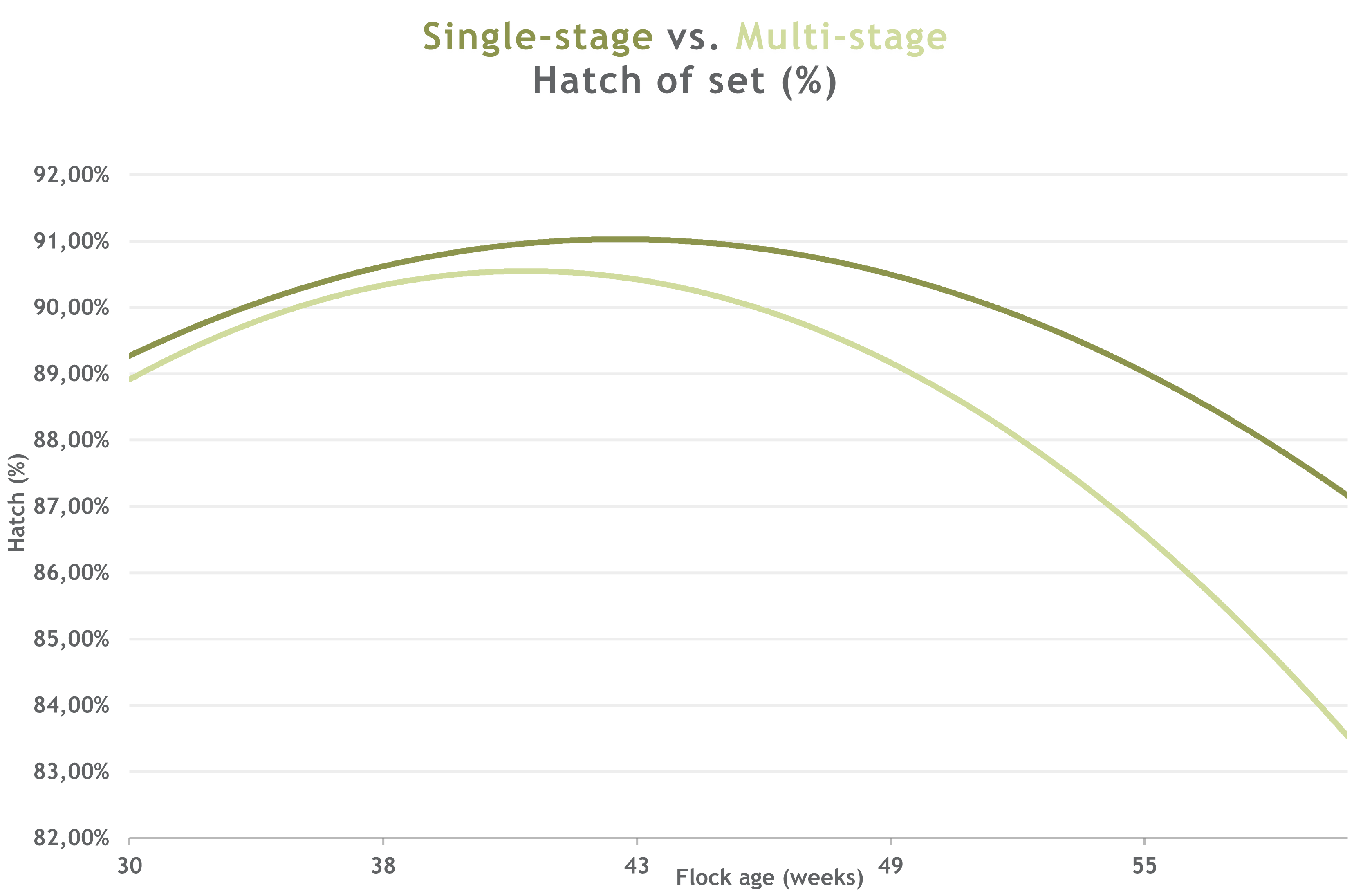
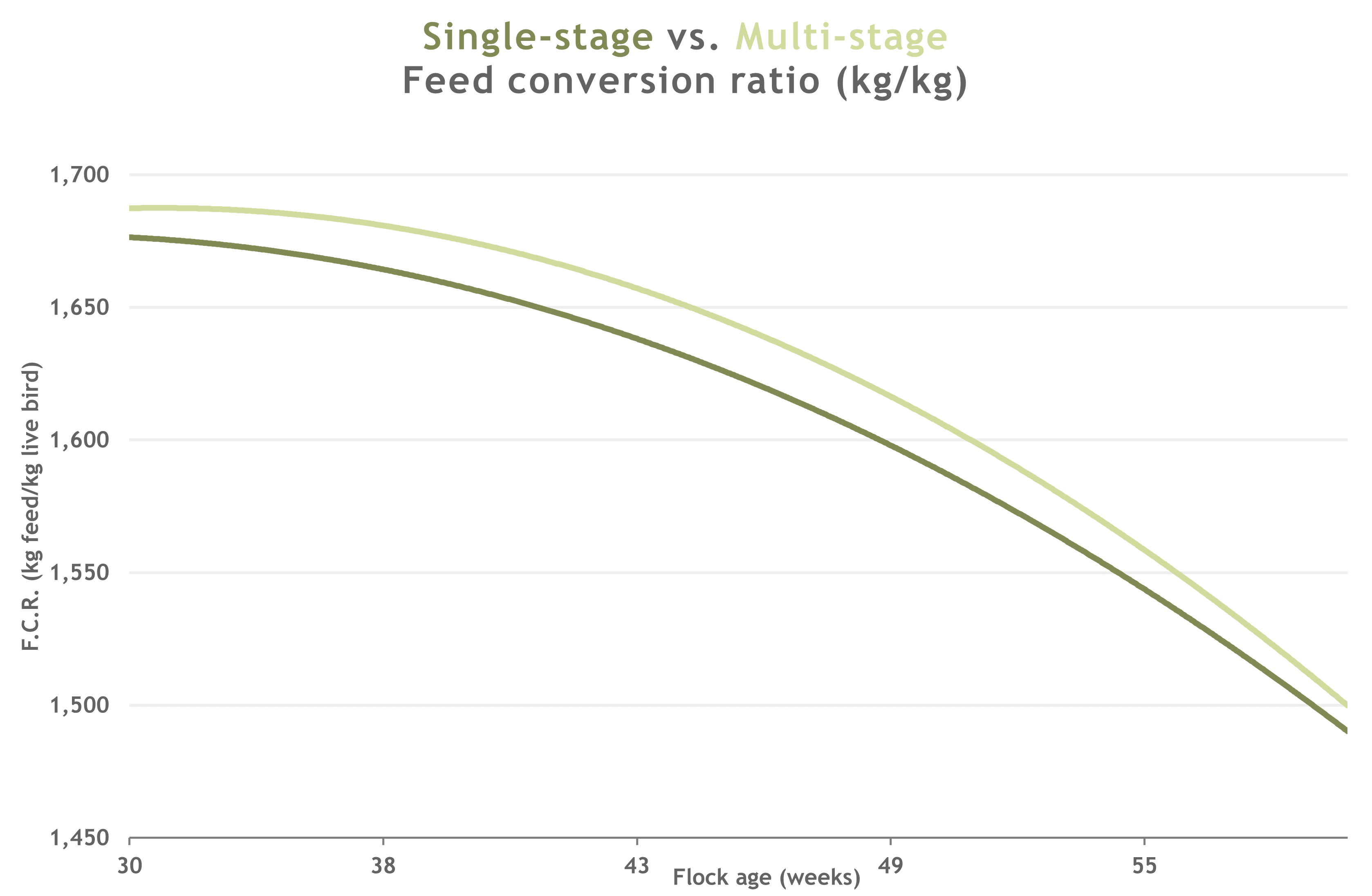
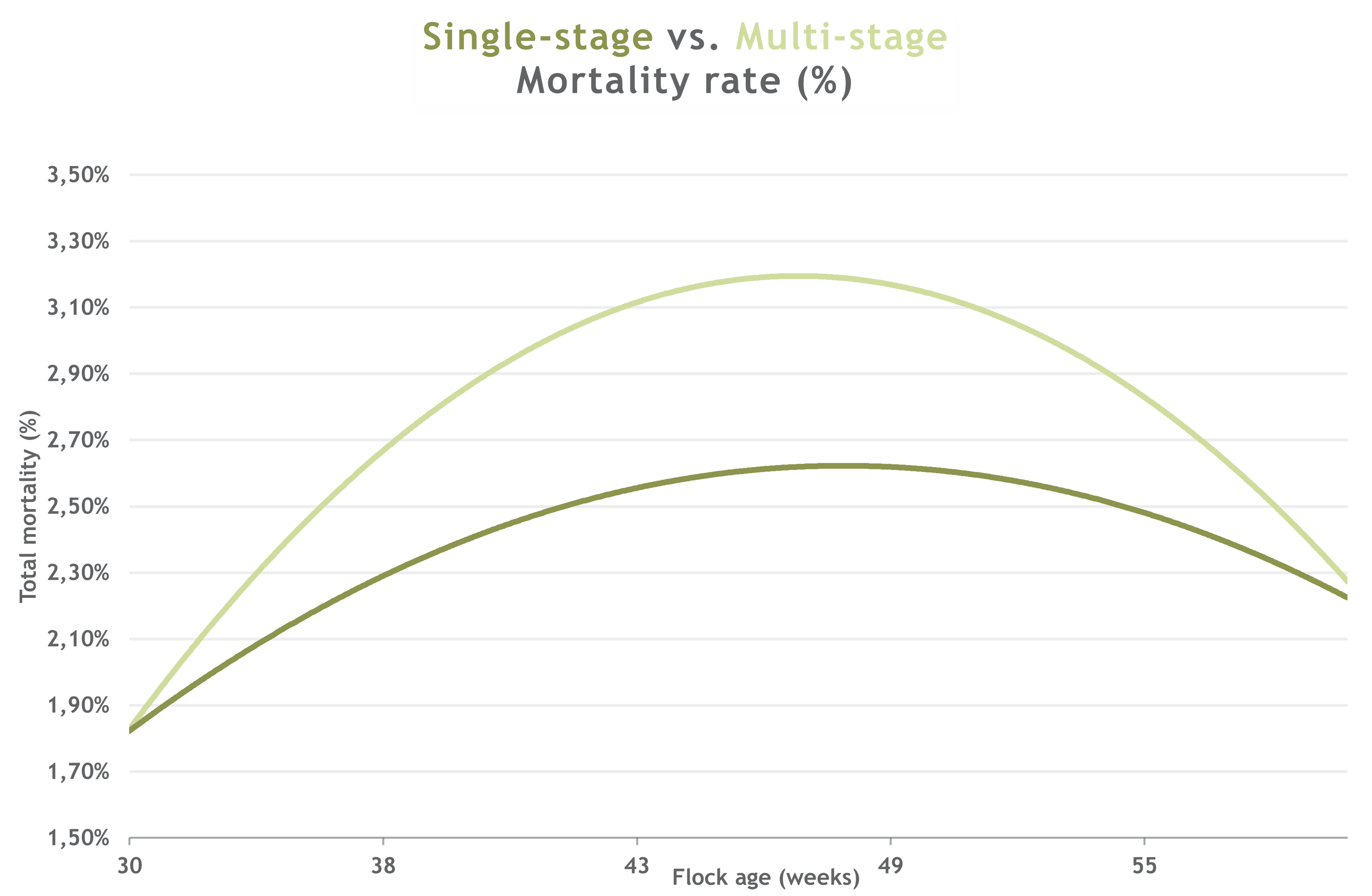
At the end of the flock’s production life, the average total gain in hatchability for single-stage incubation was 1.3% compared to multi-stage incubation. The beneficial effect on hatchability became higher with increasing flock age. The flock age being subdivided into categories, the average gain was nearly 2% at an older flock age (45 weeks old and more). The single-stage feed conversion benefit was equivalent to an average gain of 0.016 kg of feed per kg of live bird, corrected to a final body weight of 3.2 kg at slaughter with 45 days. The total post-hatch mortality was reduced by an average of 0.4% using single-stage incubators, as a result of improved chick quality. Important to stress is that the protocol was identical for both incubation concepts.
In this case study with a hatchery capacity to incubate 2 million eggs per week, the single-stage benefit represents approximately 1.6 million extra chicks per year, which is equivalent to approximately 5 million kg of live bird. Interesting to add is that, after the trial, the Brazilian LAR Cooperative decided to invest in a hatchery expansion with Petersime single-stage incubators equipped with Embryo-Response Incubation™ technology.
All single-stage benefits added up
While single-stage incubators require an initial higher investment, in the mid to long term they clearly deliver performance benefits that are economically attractive for any hatchery expansion or new hatchery investment. This explains why more and more hatcheries are making the transition from multi-stage to single-stage incubation, for more than just one reason:
- Higher performance: As proven by the results reported in this article.
- Increased biosecurity: Multi-stage incubators are never empty, so they cannot be cleaned easily. Single-stage incubators allow for easy, quick and thorough cleaning and their airtight environment minimizes biosecurity risks.
- Easier operational logistics: Multi-stage incubators are typically loaded/unloaded twice a week. This means that multi-stage systems generally require a more intensive scheduling of operational activities.
Petersime can help you to switch from multi-stage to single-stage incubation. Please don’t hesitate to contact us to discover the potential return on investment for your hatchery. Furthermore, we can offer dedicated service and training solutions to support you in taking the step to upgrade your business.
